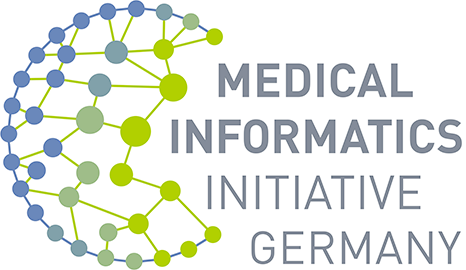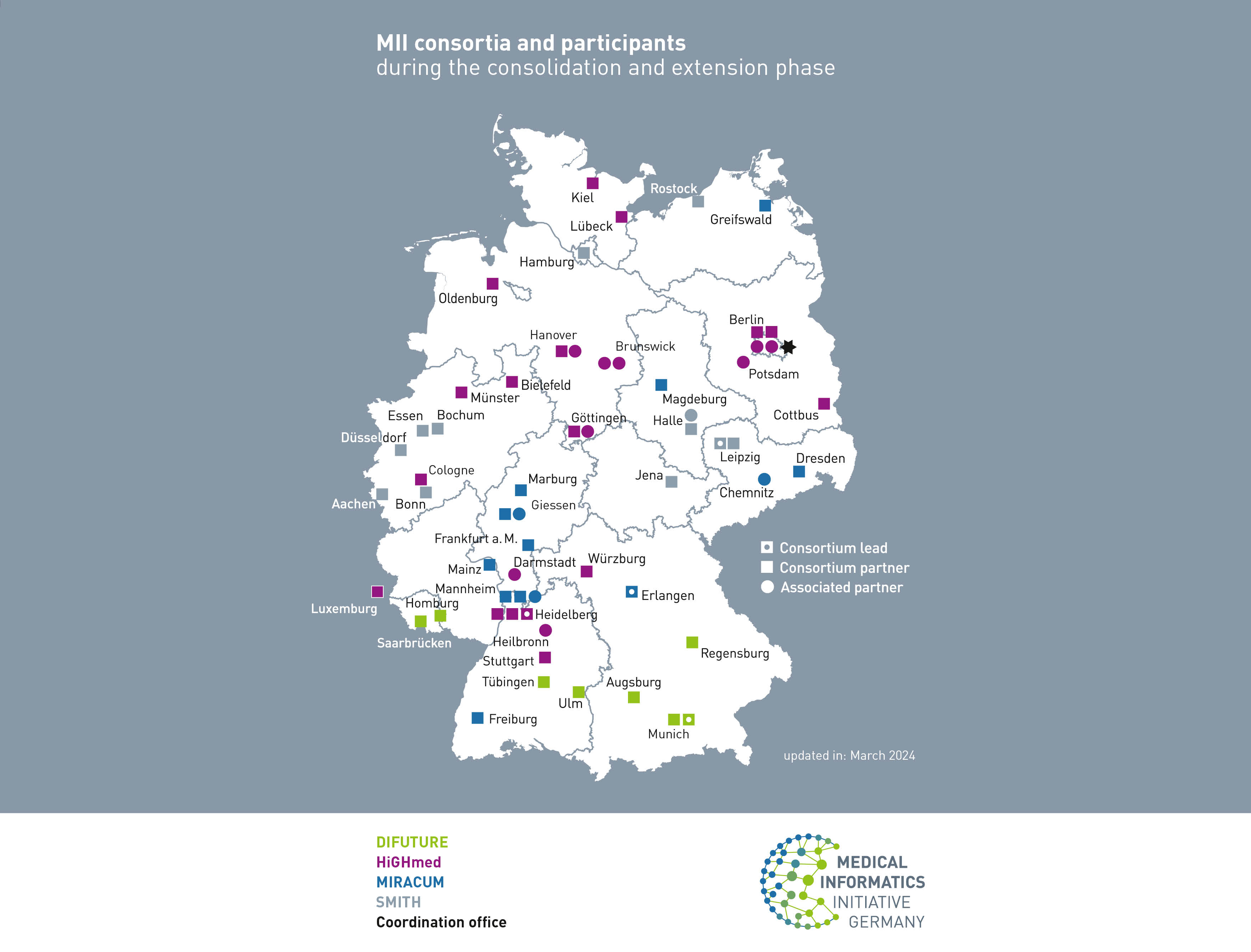Download map of consortia and participants (updated in: 03/2024)
Interactive map of participants and use cases
The initial focus is on university hospitals, since this is where patient care and clinical research are most closely connected. There are a minimum of two, but typically more, university hospitals in each consortium. Other partners include research organisations, enterprises, universities, and non-university hospitals.
Key to the initiative is the establishment and interconnection of data integration centres by each consortium. These centres are tasked with creating technical and organisational solutions for the exchange of data between healthcare professionals and clinical/biomedical researchers. Critically, the data are not stored centrally in the centres themselves. Instead, they reside locally at the site where they were captured.
The consortia are also developing IT solutions for specific use cases, with the aim of sharing research and clinical data across multiple locations and organisations. Examples of these use cases include IT-based support for diagnosing and treating rare diseases – plus recruiting patients for clinical studies, creating personalised cancer therapies, and similar tasks in day-to-day healthcare and research. These concrete use cases demonstrate the added value of the consortia’s data-sharing and IT solutions.
Furthermore, the consortia are working to strengthen medical informatics in Germany. Measures include the development of curricula, and the establishment of professorships and junior research groups.
To this end, initial ideas were developed during the first phase (conceptual phase, from 2016 to 2017). The best solutions were selected, and are being implemented (development and networking phase, from 2018 to 2022). The solutions will be made available to other (university) hospitals (consolidation and further development phase, from 2023 to 2026).
Consortia coordinate their activities and communicate with other stakeholders via overarching committees. The goal is to ensure interoperability of the IT solutions. Additionally, the new infrastructures must meet very high standards of quality, data protection and security.


